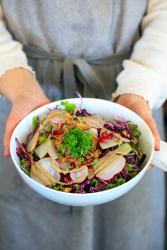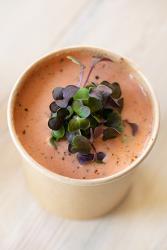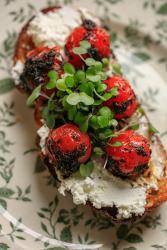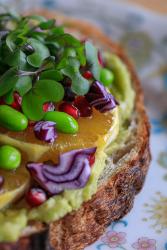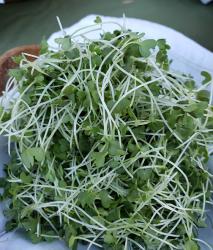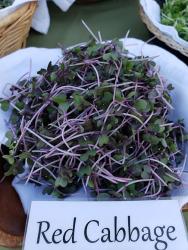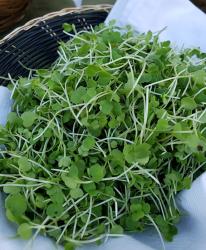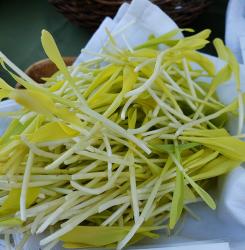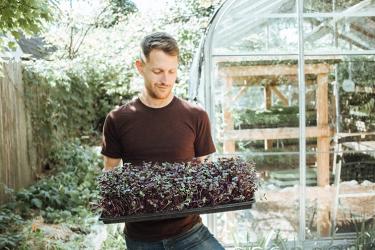What is a microgreen? Microgreens are essentially baby vegetables! Typically picked once they are 10 to 14 days old, microgreens differ from sprouts (baby vegetables in their first two to five days after germination) in looks, taste and nutritional value. Microgreens are the second phase of a plant’s life cycle, and they provide many key nutrients, minerals, vitamins and antioxidants. Any type of salad green, herb and many garden vegetables can be grown as microgreens.
How to Use Them: You’ll typically see microgreens used as garnishes in high-end restaurants because they add beauty to a plate along with a burst of flavor. However, you can incorporate them into your everyday smoothies, sandwiches and salads for taste as well as a nutritious boost.
Eat Healthy, Eat Local: “At Fiddlehead, we are very passionate about the products we offer. We first learned about microgreens from a neighbor who ran City Farm STL right in our neighborhood— and from him, we grew to love them! We now source them from Good Life Growing, a local urban farming company in North City that uses aquaponic, hydroponic, aeroponic and other organic farming methods to grow these cuties all year around. Sometimes, we even get them from our neighborhood preschool, Cornerstone Center for Early Learning. The kids grow them at school and bring them to the café. We love that microgreens add high amounts of nutrients to our menu items, and how beautiful they are. But more than anything, we love the community aspect it brings to us. Collaborating early on with a neighbor really helped both of our businesses grow; seeing these kids in our neighborhood so excited to share with us something they made has been really special; and the opportunity to support a local farm doing good work." — Fiddlehead Fern Cafe
Here’s What You’ll Need:
• A glass or ceramic container with a lid
• A grow mat or pad (varieties include coconut, hemp and jute)
• Sprouting seeds
• A window
• Water
First, soak your chosen sprouting seeds for six to eight hours depending on the type of seed (the packaging will often give you the recommended soaking time). Then, soak your growing mat in water and place it in the bottom of your container. Spread out the seeds evenly and secure the lid before placing it in a sunny window. Once the seeds sprout, you can remove the lid and let them grow until small, vibrant leaves begin to appear, watering daily.
Watering Tip: Don’t keep the mat soaked! This can cause mold and disease in your microgreens. Instead, water the mat from the bottom and occasionally mist the tops. Your microgreens will be ready to harvest once they’ve begun to sprout their first leaves. For best results, wait until they are 1 to 2.5 inches tall before harvesting.
The peppery taste and unique leaf structure of the curled cress microgreen make it a chef favorite, used in soups, salads and garnishes. For the home cook, cress is great for juicing, smoothies or as an addition to a salad mix to add some extra spice. David Sherwood, Sherwood’s Forest Nursery.
“Microgreens are full of nutrients and easy to add to your meals,” says Mary Densmore, co-owner of Bee Simple City Farm. “If you’re interested in finding the right flavor, each microgreen’s flavor is pretty true to the full-grown plant. You can use them as garnishes, in smoothies, to put on top of salads, wraps, sandwiches, tacos, eggs, soup, etc. They can really go on anything!”
Bee Simple City Farm: Bee Simple City Farm began in 2014 as a partnership between urban farmers Mary Densmore and James Meinert. Located just a mile from downtown, they think eating can be as simple as eating clean, quality food grown right here in St. Louis.



